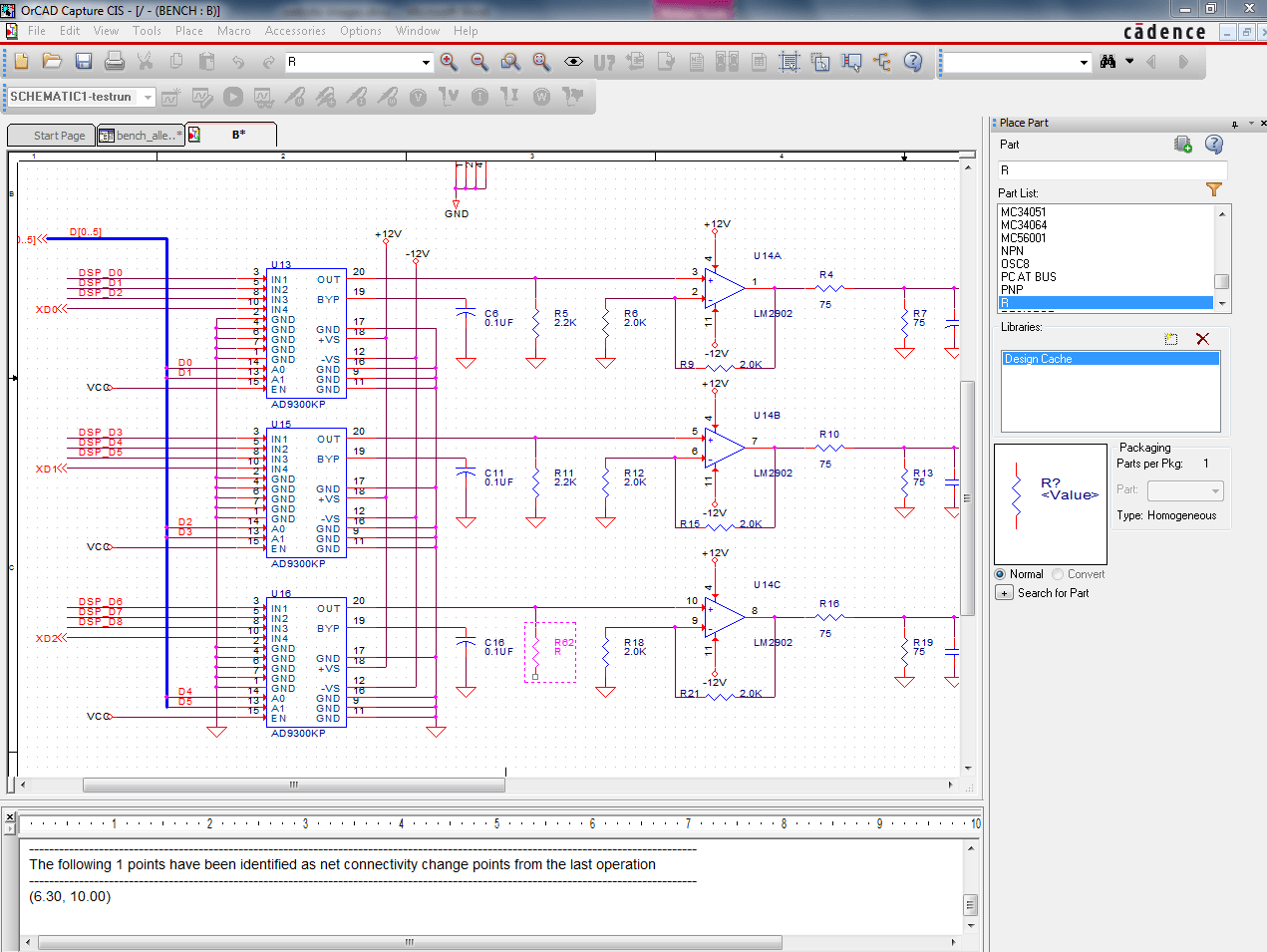Schematic Capture
Your Printed Circuit Boards an identical reflection of the design you captured in your schematics, so for it to function according to your design requirements, your schematic design must be correct. Whether you are starting from scratch or working on existing designs, Altium Designer schematic capture puts every tool you need to get the job done quickly at your fingertips. With today’s designs requiring much more than just building components or making them connect, the modern interface in makes every step of your capture journey intuitive so you can easily search, place, connect, filter, select, and organize every aspect of your design project.Schematic Capture DashboardWhile the core of Altium Designer schematic editor is its entry and editing capabilities, it’s intimately integrated with the PCB design software editor, a mixed signals simulation tool, supply chain, 3D printed circuit board modeling, PDN analyzer, and your own library database. With access to all of these integrated tools, in addition to a vast amount of actionable data information such as component availability, pricing, lifecycle, where-used, and collaboration tools, you can make intelligent decisions to reduce project time and cost all while increasing your chances of getting the design right the first time.Annotation is a routine task that you have to perform to detail your work and maintain synchronization between different parts of your design. Annotation is the process of making critical or explanatory notes for the purpose of clarifying details.
The most critical form of annotation is the systematic and methodical process for ensuring that each component is uniquely identified. Based on a component’s designator, the annotation is the primary means of referencing each component.Annotation makes it possible to ensure that all the schematic components remain related to their physical PCB implementation. PCB layout changes can result in a reassignment of designators or re-annotation, and these changes must be passed back to the schematic environment.Altium Designer automates how annotations are handled, tracked and verified to keep design data in sync.
Eeschema open source schematic capture. Part of the suiteSchematic capture or schematic entry is a step in the design cycle of (EDA) at which the electronic diagram, or of the designed is created by a designer. This is done with the help of a schematic capture tool also known as.The is the very first step of actual design of an electronic circuit. Typically sketches are drawn on paper, and then entered into a computer using a schematic editor. Therefore schematic entry is said to be a operation of several others in the.Despite the complexity of modern components – huge and tiny passive components – schematic capture is easier today than it has been for many years. Is easier to use and is available in full-featured expensive packages, very capable mid-range packages that sometimes have free versions and completely free versions that are either or directly linked to a fabrication company.In past years, schematic diagrams with mostly were fairly readable.
Schematic Capture Proteus

However, with the newer high pin-count parts and with the almost universal use of standard letter or A4 sized paper, schematics have become less so. Many times, there will be a single large part on a page with nothing but pin reference keys to connect it to other pages.levels can be enhanced by using buses and superbuses, related pins can be connected into a common bus and routed to other pages. Buses don't need to be just the traditional address or data bus directly linked pins. A bus grouping can also be used for related uses, such as all analog input or all communications related pin functions.Other considerations After the is captured in a schematic, most EDA tools allow the design to be simulated.Schematic capture involves not only entering the circuits into the CAD system, but also generally calls for decisions that may seem more appropriate for later in the design, such as.

Although you may be able to change the package later, many PCB CAD systems ask you to choose both the part and package when placing it into the schematic capture program.This also brings into play such considerations as prototyping and assembly. In a high-volume assembly environment, there will be plenty of opportunities for analysis. However, in a environment such as at assembly houses specializing in low-volume/high-mix and quick turnaround times, the machines are programmed directly from the board layout files. Careful package selection during schematic capture will save time during the assembly and process.With new parts, the CAD system may not have your chosen component in its parts library, so you may need to create the parts library yourself. Again, you may at the time not be overly concerned with the package, but careful creation of the part library will save time and risk later.After the is captured in a schematic, then the PCB layout can begin.See also Wikibooks has a book on the topic of:The Wikibook has a page on the topic of:.Further reading. Pratt, Gary; Jarrett, Jay (2001-08-06). 49 (16): 69.
Schematic Capture Pcb Design
ED Online ID #3784.